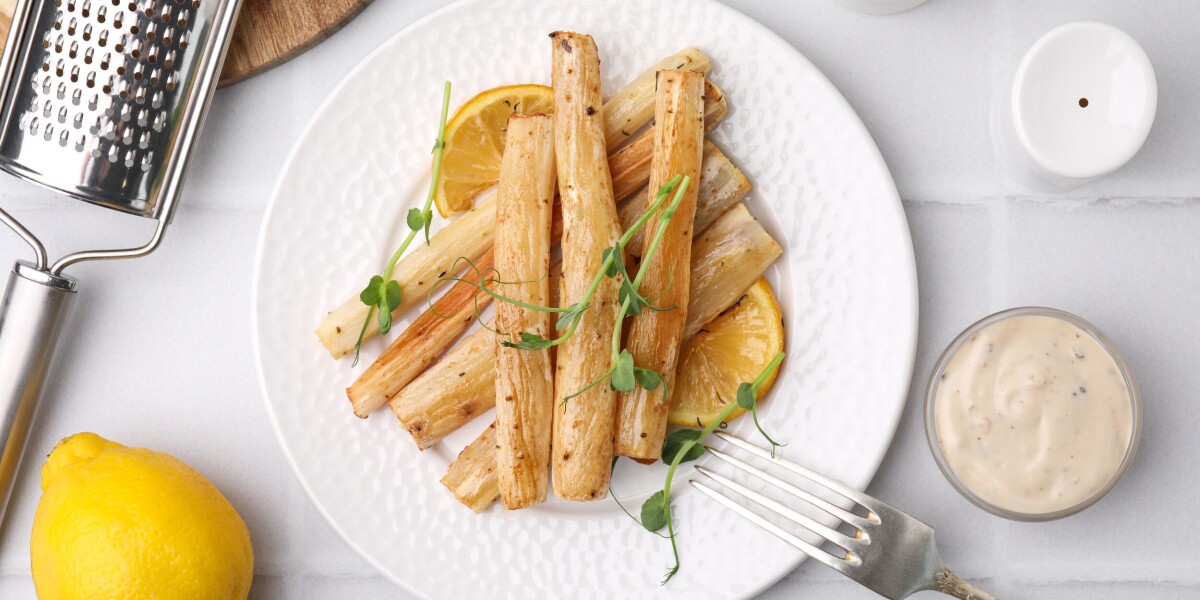
An alternative to potatoes: 'My favourite aspect of salsify is its texture'
- Select a language for the TTS:
- UK English Female
- UK English Male
- US English Female
- US English Male
- Australian Female
- Australian Male
- Language selected: (auto detect) - EN
Play all audios:
Salsify is sometimes known as the ‘oyster plant’ because of its mild briny flavour, which is more pronounced when consumed fresh rather than tinned.
My favourite aspect of salsify is its texture. It is pleasantly neutral – neither too crunchy nor too tender – and makes an excellent vehicle for most cream sauces.
You may occasionally find fresh salsify at the market. Like any vegetable, it is best cooked fresh, although the preparation can be laborious. Once you have peeled and prepared it (see
below), you can use it in any recipe that calls for tinned salsify.
It is worthwhile keeping a few tins on hand. Supermarkets and many épiceries fines offer a good selection of salsify in both tins and jars.
They are quick to prepare and provide a pleasant alternative to potatoes when you want something light yet still satisfying to serve alongside a pan-fried escalope or a roast.
As soon as it’s peeled, salsify discolours, so prepare a large bowl of acidulated water (add the juice of a lemon or some vinegar) to keep it white.
Another inconvenience is that you must wear gloves because the peel can stain your hands. Once prepared, peel the roots and immerse them immediately in the acidulated water; trim away any
woody bits.
Meanwhile, cut the salsify into bite-size pieces, about 6 cm long and keep the pieces in the acidulated water until needed. When the water boils, add the salsify pieces and cook until just
tender when pierced, 10–20 minutes.
Sauté in butter, season and add a finely chopped garlic clove and some freshly chopped parsley.
For a gratin, prepare a bechamel and combine it with the salsify pieces in a well-buttered baking dish. Sprinkle over grated cheese, breadcrumbs and bake until browned.
Brown in butter, season, then add cream to cover and simmer to thicken slightly. Add chopped fresh herbs, parsley or chives.
Bake parmigiana style by first browning in olive oil, then transfer to an ovenproof dish, season and add tomato coulis to cover well. Top generously with grated cheese and fresh basil (or
dried thyme) and bake until bubbling and brown.